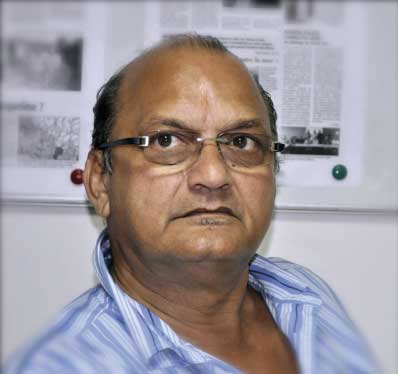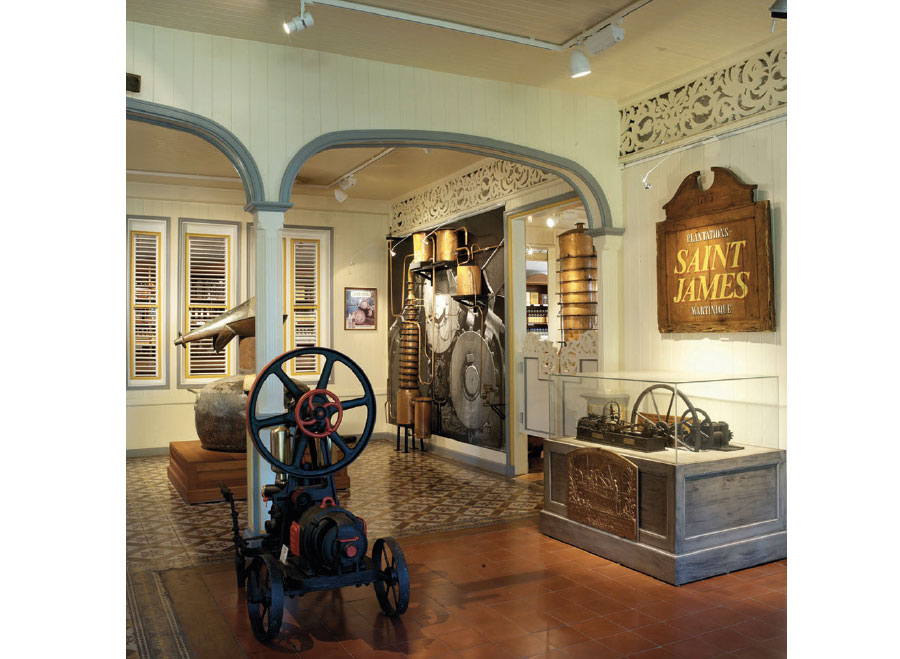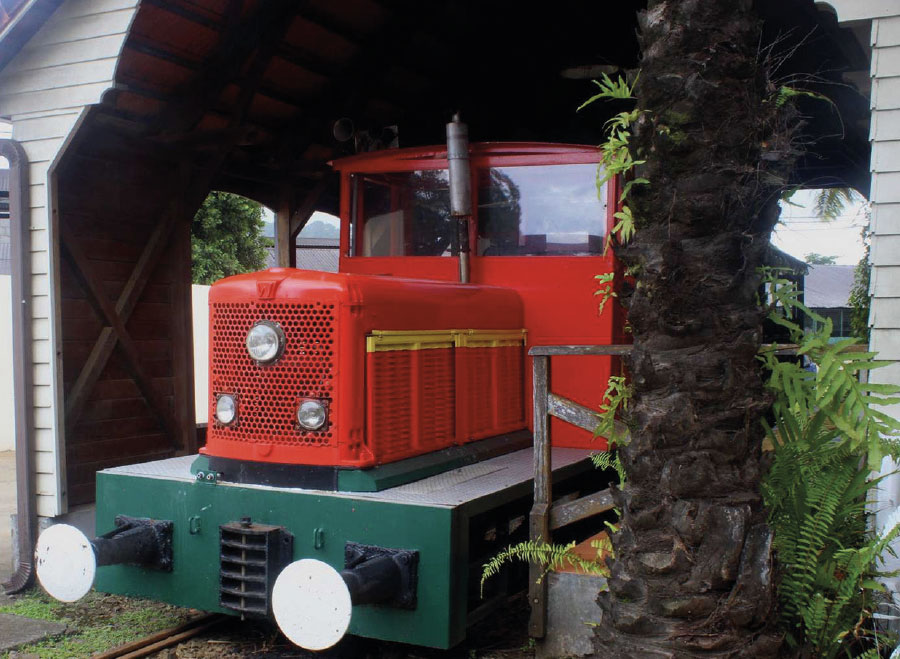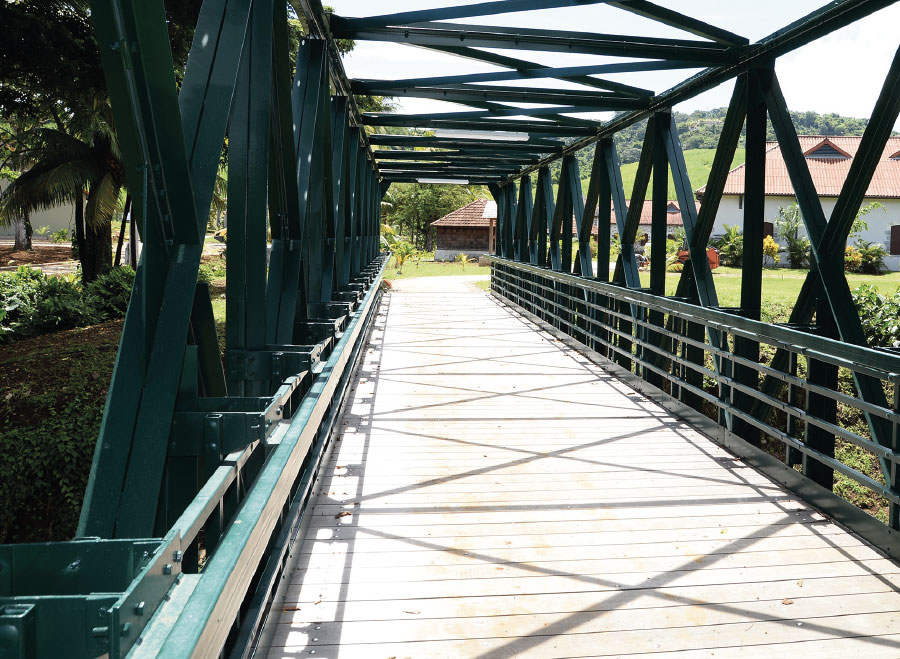If today spirit tourism around rum is no longer a debate in Martinique, it has not always been so. Michel Fayad, who is in charge of the rum museum and the La Salle house (Saint-James), tells us how the Martiniquais have culturally re-appropriated their rum, before making it a real asset to attract tourists. A windfall that also allows them to safeguard a whole part of their history and cultural heritage.
Are the people of Martinique proud of their rum?
Today they are, but that wasn’t always the case. Because sugar and rum in Martinique, in the Caribbean and even in the Americas are the result of a painful history, namely that of the slave trade and colonisation. Martinique’s rum, a basic alcohol in Martinique at that time, which was available at low cost in the homes, was considered to be the alcohol of the poor, an alcohol of pain, even of distress, which was drunk at funeral wakes, funerals or heartbreaks.

In any case, the image of rum is very good in France today?
Here again I would answer you, today yes, but that was not always the case either, because in the Sixties, one spoke about the small rum, used in the kitchen, the pastry making, which was used to make grogs, or to flambé bananas. At that time, rum was made from molasses, and used not as a product, but as an ingredient.

Today, the image of rum and the Caribbean have become associated, and for the European, it represents travel, the open sea, adventure, buccaneers, pirates and other buccaneers. And in this craze for island rum, while looking for the rare little nugget, they discovered that there was a rum in Martinique made directly from pressed cane juice, and producers who had been fighting since 1970 to obtain an Appellation d’Origine Contrôlée, but who were running up against administrative formalities.
At that time, tourism in Martinique was living peacefully on its climatic and floral situation, which ensured it a decent income.
The famous Martinique island of flowers?
Exactly, for many years, Martinique considered itself as a seaside resort, highlighting its nature, its climate, and its gentle way of life, but Martinique’s culture, which was too often demanding, remained absent from the tourist offer.
Has Spirit Tourism helped rum to improve its image?
Spirit tourism, which was born in Saint-James, at the rum museum to be precise, in the 1990s, has not simply enabled rum to improve its image, but has been a real cultural and economic revolution, which has put the Martinican people, with their history, culture, heritage and regional product (agricultural rum) at the heart of Martinique’s tourism policy.
This process took more than 20 years to set up, despite the fact that the AOC was obtained in 1996. It has to be said that the people in charge of tourism were very perplexed by this new tourist orientation. Isn’t it paradoxical,” they said, “to use rum, the product of such a chaotic and painful history, as a tourist attraction?
Rum represented an alcohol of suffering, working in a factory, cutting cane, were considered as sub-jobs, rum is a strong alcohol, accessible, which did not make anybody dream, and besides in the great ceremonies in Martinique, (baptism, marriage, dancing…), the imported Alcohols held permanently the top of the pavement.
How did the people of Martinique re-appropriate their rum?
Little by little, with the massive arrival of tourists in the distilleries, with the international recognition of the Appellation d’Origine Contrôlée, with the curiosity of the methods of manufacture (steam engine of the XIXth century), with the modern methods of recycling of waste and energy saving, with the multiple gold medals at the International Agricultural Show in Paris and in the great competitions throughout the world, with the arrival of journalists from all over the world who came to discover the famous rum-AOC, the Martiniquais have gradually re-appropriated, and above all reconciled themselves with this famous rum, which is part of the history of Martinique.
What other factor has enabled the rum to regain its letters of nobility?
Packaging: in 1993, Saint-James reworked its packaging and presentation in anticipation of the prestige of its brand, as part of the future development of its museum. Since that time, Martinique rum has become a product that is given as a gift to friends, rather than a product that is consumed for oneself.

And today?
Today, international demand is much higher than our production capacity. Spiritourism is a real success story, with more than 800,000 tourists visiting Martinique’s distilleries each year, making Martinique the leading spirit tourism destination in France.
Even today, spirit tourism has created a virtuous circle of economic development in Martinique. It has allowed the restoration of a large part of the material heritage: industrial heritage (factory), architectural heritage (colonial house & stone dwelling), railway heritage (old-fashioned locomotive), religious heritage (small chapel or small Indian temples). …
and then to install in these places, following the example of the rum museum, cultural centres disseminating an intangible heritage rich in creation, (dance, songs, bèlé, music, literature and contemporary art). Today, spirit tourism is creating a rapprochement between the different communities around a common project for this regional product, where each one brings his or her share of humanity. The industry now employs more than 4,000 people.
How is the Saint-James Rum Museum doing?
The rum museum, created in 1980, has always been innovative. Since 1982, it has installed the rum festival, in 1994, a contemporary art gallery, the end-of-harvest festival in 1995, a steam locomotive in 2002, which links the rum museum to the banana museum and now to the La Salle house, a jazz festival, in partnership with the Atrium national stage, the Indian diaspora gatherings (Mela), and in a few years the Saint-James factory has become a true citizen’s enterprise, participating not only in the economic development of the region but above all in its cultural influence.
From a tourist point of view, the Martiniquais today are appreciated, not for the mildness of their climate, or the beauty of their landscapes, but for the originality of their culture and their know-how in terms of regional products. The welcome has been transformed into hospitality.



